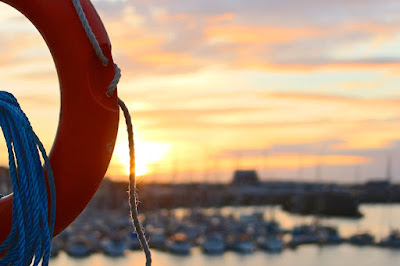
It is somewhat fulfilling to save one's
life. There are indeed those who have a calling for a job that will save lives.
Some of them do what it takes to become a lifeguard. Experts highly emphasized
that a lifeguard is a very important occupation. He or she must know how to
determine the difference between life and death. Whether you want to be a
lifeguard for a swimming pool or perhaps for a natural body of water, there is
need for you to undergo the necessary training and certification for you to
qualify for the job.
In order to get a job
as a lifeguard, you will first have to obtain a lifeguard certification. In
fact, there are three certification areas that everyone must have. The first is
a lifeguard certificate that has passed the basic course. The second is
evidence of CPR / AED training and the third is first aid training. But before
you can qualify for a lifeguard certification course, you must be at least 15
years old at the time of your last training.
It is not difficult to
find certification courses offered by local schools and water facilities, as
well as by the American Red Cross, Aquatic Solutions, and the YMCA among many other national
organizations. Many courses offer first aid and CPR training, so it is possible
to get all 3 certificates in only 1 class.
To pass the class,
students must complete a physical fitness test to prove that they can meet the
demands of lifeguard duties. The tests may vary depending on your teacher or
organization, but in general you will have to swim for 300 yards, both the
crawl and breaststroke, without stopping. The other part of the test usually
requires the participants to dive and take a weight of 10 pounds at the bottom
of the pool. Basically, you have to be more than just a stylish swimmer to
perform these 2 rounds. However, tests might vary according to the program you
have signed up for.
Apart from reinforcing
your swimming skills, you will also need to undergo emergency training courses
so you are sure to pass complete certification. You must know that lifeguards
will deal with lots of critical situations apart from drowning. With that said,
you must also undergo training for first aid and CPR aside from the basic
lifeguard course. You can actually undertake classes given by the top safety consultants
- something that will provide you with a boost to your credentials if you are
already applying for work.
Before enrolling in a
class, you should be aware that there are different certification types which
each prepare students for a specific aquatic environment with its own unique
challenges. For example, the American Red Cross has 4 different classes. The
standard Lifeguarding class is for working at a normal pool. The Waterpark
lifeguard is required to work in a water park and the Waterfront Lifeguarding
course is suitable for aquatic environments such as ponds, lakes and rivers.
The simplest of the 4 courses is for shallow water operator certification,
which qualifies only for working in a pool or body of water 4 feet deep or
less.
Many other facilities
offer similar classes but if you are dreaming of becoming a beach lifeguard, it
is a little harder to find a course that specializes in this area because it is
more demanding than the others. You will need to find a school that offers a
course specifically in "surf" lifeguarding in order to be qualified
to work at a beach.
Although certification
requirements for lifeguards are fairly standard in all parts of the country, it
is helpful to know that there may be some country-specific requirements. To
find out if the condition in which you live has a particular need, ask someone
at the water facility where you are considering your certification course. They will surely know the
requirements and be able to give you more detailed information.